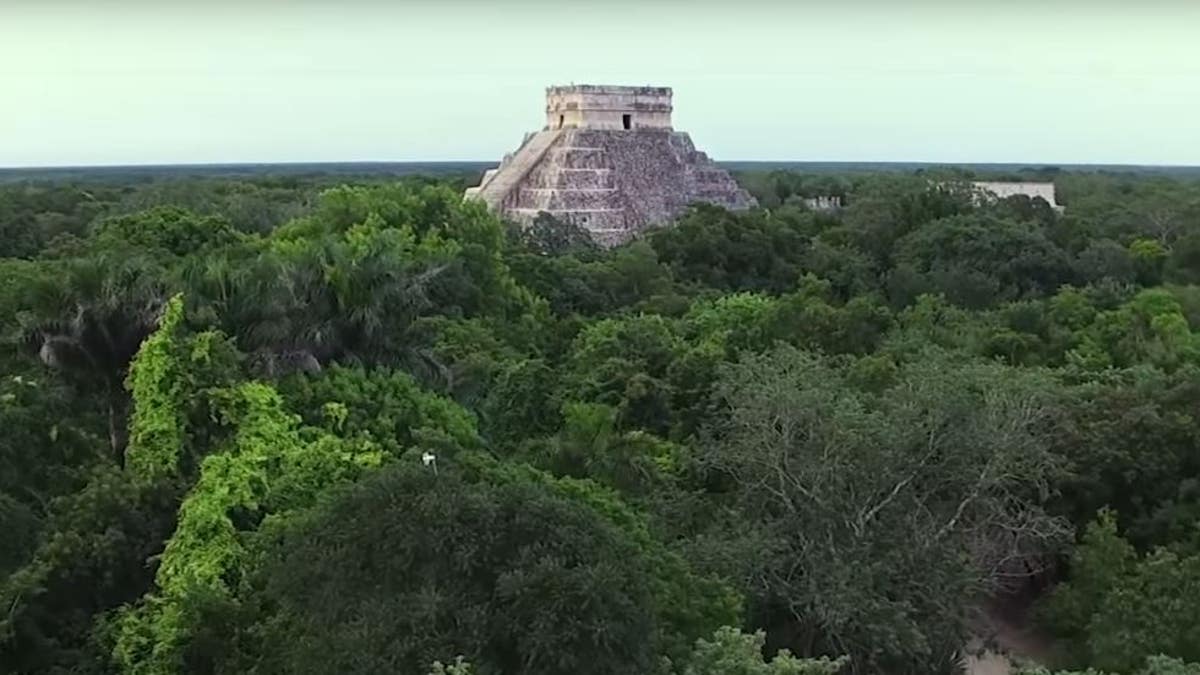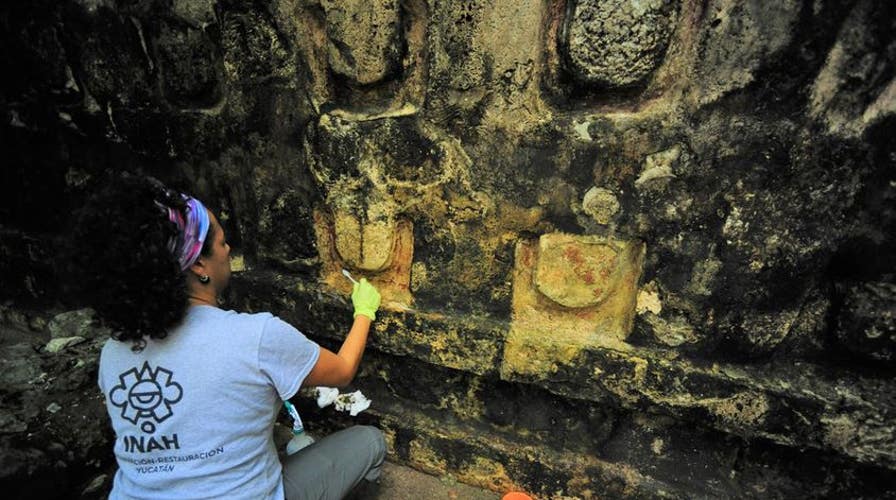Fox News Flash top headlines for Dec. 30
Fox News Flash top headlines for Dec. 30 are here. Check out what's clicking on Foxnews.com
Archaeologists in Mexico have unearthed the remains of a huge Mayan palace that's estimated to be more than 1,000 years old.
Located in the city of Kuluba, which is about 100 miles west of Cancun, the building itself is 180 feet long, 49 feet wide and 19 feet high, according to an announcement from Mexico's National Institute of Anthropology and History.
The palace was in use during two eras of Mayan civilization, according to Alfredo Barrera Rubio, one of the lead archaeologists on the site.
RARE BLACK RHINO BABY BORN ON CHRISTMAS EVE

Archaeologists uncovered a building in Kuluba. (Mexico's National Institute of Anthropology and History)
“We know very little about the architectural characteristics of this region, the north-east of Yucatán. So one of our main objectives, as well as the protection and restoration of cultural heritage, is the study of the architecture of Kulubá,” he said in a video statement, as reported by The Guardian.
“This is just the start of the work. We are only just uncovering one of the largest structures on the site," the archaeologist added.
Scientists have long been fascinated by the Mayans, who built one of the most sophisticated and developed civilizations over the course of several thousand years.
"In its time, the finishes of this temple would have given the impression of being snake scales; this is known because the stone reliefs that the property has in its accesses, resemble the jaws of a 'monster of the earth,'" said Fernanda Escalante in a statement.
CUTE BABY ORANGUTAN SEPARATED FROM MOTHER IS RESCUED IN REMOTE VILLAGE

An archaeologist cleans a portion of the building found in Kuluba. (Mauricio Marat/INAH)
This is the latest of many unique discoveries regarding the Maya across Central America in recent years.
Earlier this year, experts discovered a tool that was used by Maya salt workers more than 1,000 years ago. Made from the mineral jadeite, the chisel-style implement was found at the site of Ek Way Nal, a Maya salt works in southern Belize that is now submerged in a saltwater lagoon.
Last year an ancient mask depicting a 7th-century Maya king was discovered in southern Mexico.
Fox News' James Rogers contributed to this report.
